کتاب Sejong Korean 6
کتاب Sejong Korean 6 مطالب جالب و منظم یادگیری را برای بهبود مهارت های ارتباطی زبان آموزان کره ای و محتوای فرهنگی ارائه می دهد که به آنها امکان می دهد طیف گسترده ای از فرهنگ کره ای را تجربه کنند.
این است که با توجه به وضعیت زبان آموزان محلی کره در خانه و خارج از کشور از وظایف عملی تشکیل شده است. همچنین حاوی مطالب متنوعی برای یادگیری متعادل از فعالیتهای ارتباطی و عناصر زبانی برای بهبود یکنواخت تسلط و دقت است.
برای درک صحیح جامعه و فرهنگ کره ای از دیدگاه متقابل فرهنگی ، تهیه مطالب عملی و اطلاعات فرهنگی لازم است تا یادگیری فرهنگی از هر دو جهت انجام شود.
این یک مزیت بزرگ است که قادر به یادگیری زبان کره ای از طریق سخنرانی هایی که در رابطه با برنامه یادگیری Nuri-Sejong Haengdang است که به زبان های مختلف ترجمه شده است.
توضیحات کتاب
کتاب Sejong Korean 6 از 14 واحد و 5 واحد فرهنگی تشکیل شده است تا بتوان آن را با Sejong Korean 5 پیوند داد. زمان آموزش هر واحد از واحد 14 6 ساعت است، به طوری که می توان آن را با توجه به شرایط عملیاتی King Sejong به صورت انعطاف پذیر اعمال کرد. موسسه. واحد فرهنگی طوری طراحی شده بود که در حدود 10 دقیقه در واحدهای مرتبط با موضوع به اشتراک گذاشته شود یا در واحدهای جداگانه در ارتباط با موسسه نوری-سجونگ تدریس شود.
فرهنگ کره ای
- فرهنگ کره میراث مشترک فرهنگی و تاریخی کره و منچوری جنوبی است. کره ایها به عنوان یکی از قدیمیترین فرهنگهای پایدار در جهان، روایتهای سنتی خود را به روشهای مختلفی گذراندهاند. از اواسط قرن بیستم، کره بین کشورهای کره شمالی و کره جنوبی تقسیم شدهاست، و امروز منجر به اختلافات فرهنگی زیادی گردیدهاست. قبل از پادشاهی چوسان، عمل شامانیسم کره ای عمیقاً در فرهنگ کره ای ریشه داشت.
-
رقص
- در کره، بین رقص درباری و رقص مردمی تفاوت وجود دارد. رقصهای درباری معمولاً تحت عنوان (jeongjaemu) است که در میهمانیها اجرا میشود که در آیینهای کنفوسیایی کره ای انجام میشود. Jeongjaemu به رقصهای بومی و اشکال وارد شده از آسیای میانه و چین تقسیم میشود. ایلو به رقص غیرنظامی (문무، munmu) و رقص نظامی (무무، mumu) تقسیم میشود. در کره نمایشنامه و رقص با نقاب در بسیاری از مناطق منطقه ای کره انجام میشود. لباس سنتی جنس، نوع خاصی از لباس است که زنان در جشنوارهها میپوشند که به رنگهای صورتی و با چندین نماد در اطراف ناحیه گردن آن است.کتاب Sejong Korean 6
- رقص سنتی رقصهای دربار در بسیاری از تولیدات معاصر منعکس شدهاست. تککیون یک هنر رزمی سنتی کرهای است که نخستین اشاره به آن به دوران پادشاهی جوسان مربوط میشود. رشتهٔ تکواندو و برخی دیگر از رشتههای رزمی مدرن کرهای با اقتباس از تکیون پایهگذاری شدهاند. حرکات پویا و روان پا از ویژگیهای این سبک رزمی کرهای است. تککیون شامل مجموعهای از ضربات لگد، مشت و آرنج، حمله به نقاط حساس بدن، و فنون پرتابی و گلاویزی میشود.
نقاشی
- تیراندازی با کمان اسب کره ای در قرن پنجم نخستین نقاشیهای موجود در شبه جزیره کره، از سنگنگارههای دوران ماقبل تاریخ است. با ورود بودیسم از هند از طریق چین، تکنیکهای مختلفی معرفی شد. این تکنیکها به سرعت خود را به عنوان تکنیکهای اصلی معرفی کردند، اما تکنیکهای بومی هنوز وجود دارند. در میان آنها نقاشیهای دیواری مقبره گوگوریو قرار داشت. این نقاشیهای دیواری در داخل بسیاری از مقبرهها، بینشی ارزشمند از مراسم، جنگ، معماری و زندگی روزمره مردم باستان گوگوریو است. پادشاهی بالهایی، حکومت پس از گوگوریو، بسیاری از عناصر سنتی گوگوریو را جذب کرد.
- گرایش به طبیعتگرایی با موضوعاتی مانند مناظر واقع بینانه به ویژه گلها و پرندگان محبوب است. جوهر رایجترین ماده مورد استفاده است و روی کاغذ توت یا ابریشم نقاشی میشود. در قرن ۱۸ام تکنیکهای بومی بویژه در خوشنویسی و حکاکی مهر و موم پیشرفته بودند. در طول دوره پادشاهی چوسان، ژانرهای جدید نقاشی کره ای مانند چاکگوری chaekgeori (نقاشی از کتاب) و مونجادو munjado (نقاشی از حروف) رونق گرفت.کتاب Sejong Korean 6
صنایع دستی
- مجموعه صنایع دستی منحصر به فردی در کره تولید میشود. بیشتر صنایع دستی برای استفاده روزمره خاص ایجاد میشود، و اغلب به جای زیباییشناسی، اولویت آنها کاربری است. بهطور سنتی، مواد اصلی، فلز، چوب، پارچه، لاک و ظروف سفالی از مواد اصلی استفاده شده بودند، اما بعداً از شیشه، چرم یا کاغذ به صورت پراکنده استفاده شدهاست.
- صنایع دستی باستانی، مانند سفالهای قرمز و سیاه، شباهتهایی با سفال فرهنگهای چینی در امتداد رود زرد دارند. با این وجود، یادگارهای یافت شده از عصر برنز، مشخص و مفصل تر است. بسیاری از صنایع دستی پیشرفته و پیچیده از جمله تاجهای طلاکاری شده، سفالهای طرح دار، گلدانها یا زیور آلات کشف شدهاست. در دوره گوریو استفاده از برنز پیشرفته بود. برنج، یعنی آلیاژی از مس و یک سوم روی، یک ماده مخصوصاً محبوب بودهاست. این سلسله به دلیل استفاده از ظروف سلادون و مشهور است.
کتاب Sejong Korean 6
provides interesting and regular learning material to improve Korean learners’ communication skills and cultural content, enabling them to experience a wide range of Korean culture.
It is composed of practical tasks according to the situation of local Korean learners at home and abroad. It also contains a variety of content for balanced learning of communication activities and language elements to improve uniform mastery and accuracy.
In order to properly understand Korean society and culture from a cross-cultural perspective, it is necessary to provide practical material and cultural information in order for cultural learning to take place in both directions.
It is a great advantage to be able to learn Korean through lectures related to the Nuri-Sejong Haengdang learning program that have been translated into several languages.کتاب Sejong Korean 6.
Book Description
The book Sejong Korean 6 consists of 14 units and 5 cultural units so that it can be linked to Sejong Korean 5. The training time of each unit of 14 units is 6 hours, so that it can be applied flexibly according to the operating conditions of King Sejong. Institute. The cultural unit was designed to be shared for about 10 minutes in related units or to be taught in separate units in connection with the Nouri-Sejong Institute.
Korean culture
- Korean culture is the common cultural and historical heritage of South Korea and South Manchuria. As one of the oldest enduring cultures in the world, Koreans have passed on their traditional narratives in a variety of ways. Since the middle of the twentieth century, Korea has been divided between North and South Korea, and today it has led to many cultural differences. Before the reign of Chosun, the practice of Korean shamanism was deeply rooted in Korean culture کتاب Sejong Korean 6.
Dance
- In Korea, there is a difference between court dance and folk dance. Court dances are usually called (jeongjaemu), which is performed at parties performed in Korean Confucian rituals. Jeongjaemu is divided into indigenous dances and forms imported from Central Asia and China. Ilo is divided into civilian dance (문무, munmu) and military dance (무무, mumu). In Korea, masked plays and dances are performed in many parts of Korea. Traditional clothing is a special type of clothing that women wear at festivals, which is pink in color and has several symbols around the neck areaکتاب Sejong Korean 6.
- Traditional court dance is reflected in many contemporary productions. Tekkeun is a traditional Korean martial art that first dates back to the reign of Josan. Taekwondo and some other modern Korean martial arts are based on Tekion. Dynamic and smooth foot movements are the features of this Korean martial style. Tekkion includes a set of kicks, punches and elbows, attacks on sensitive parts of the body, and throwing and slamming techniques.کتاب Sejong Korean 6.
Painting
Korean horse archery in the fifth century
The first paintings on the Korean Peninsula are from prehistoric lithographs. With the arrival of Buddhism from India through China, various techniques were introduced. These techniques quickly established themselves as the main techniques, but indigenous techniques still exist. Among them were murals of Goguryeo’s tomb. Inside many tombs, these murals provide valuable insights into the rituals, wars, architecture, and daily life of the ancient Goguryeo people. The winged kingdom, the post-Goguryeo government, absorbed many of the traditional elements of Goguryeo.
The tendency towards naturalism is popular with subjects such as realistic landscapes, especially flowers and birds. Ink is the most commonly used material and is painted on mulberry or silk paper.کتاب Sejong Korean 6.
In the 18th century, indigenous techniques were especially advanced in calligraphy and stamping.
During the reign of Chosun, new genres of Korean painting flourished, such as chaekgeori (painting from books) and munjado (painting from letters).
Handicrafts
- A unique collection of handicrafts is produced in Korea. Most handicrafts are made for specific everyday use, and are often used instead of aesthetically. Traditionally, the main materials were metal, wood, cloth, lacquer, and pottery, but later glass, leather, or paper were used sparsely.کتاب Sejong Korean 6.
-
Ancient handicrafts, such as red and black pottery, bear similarities to the pottery of Chinese cultures along the Yellow River. However, the relics found from the Bronze Age are clearer and more detailed. Many advanced and sophisticated handicrafts have been discovered, including gilded crowns, patterned pottery, vases or ornaments. The use of bronze was advanced in the Goryeo period. Rice, an alloy of copper and one-third zinc, has been a particularly popular ingredient. This dynasty is famous for the use of celadon dishes.کتاب Sejong Korean 6.
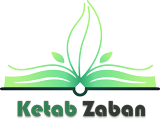 زبانکده راه رشد | فروشگاه آنلاین کتاب زبان
زبانکده راه رشد | فروشگاه آنلاین کتاب زبان

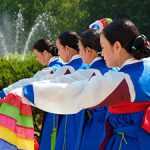
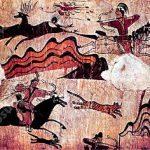
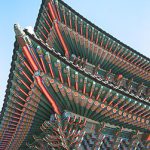
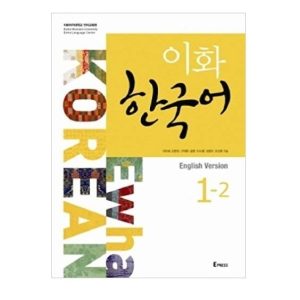
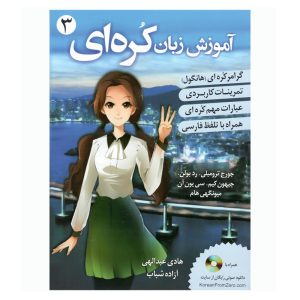
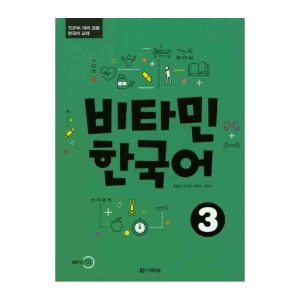
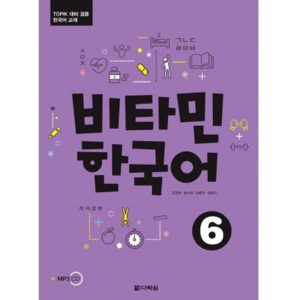
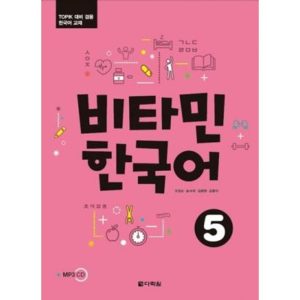

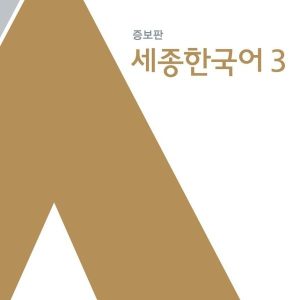
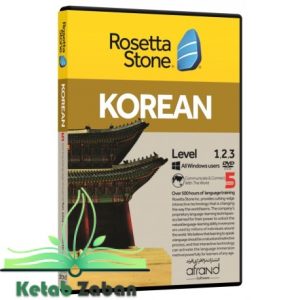

نقد و بررسیها
هنوز بررسیای ثبت نشده است.